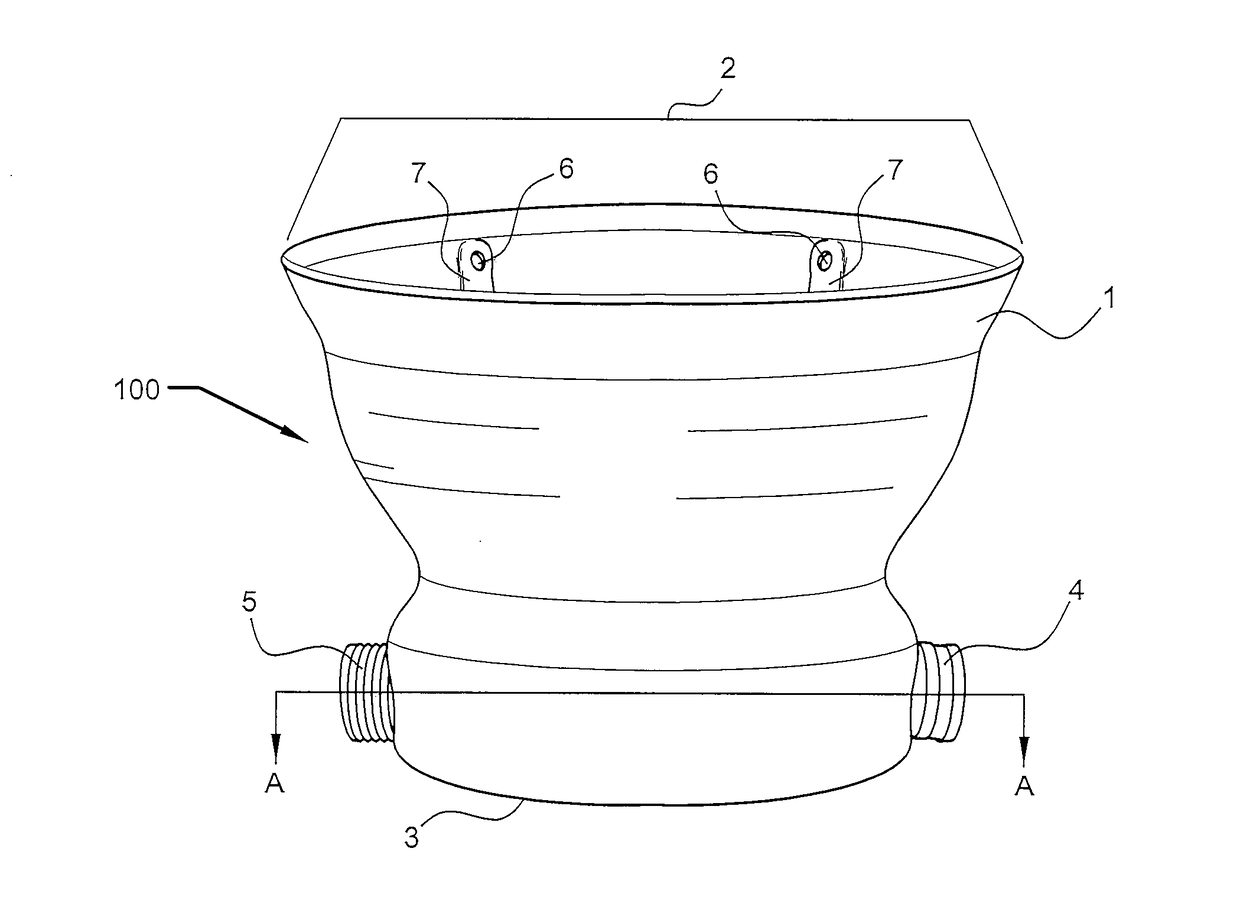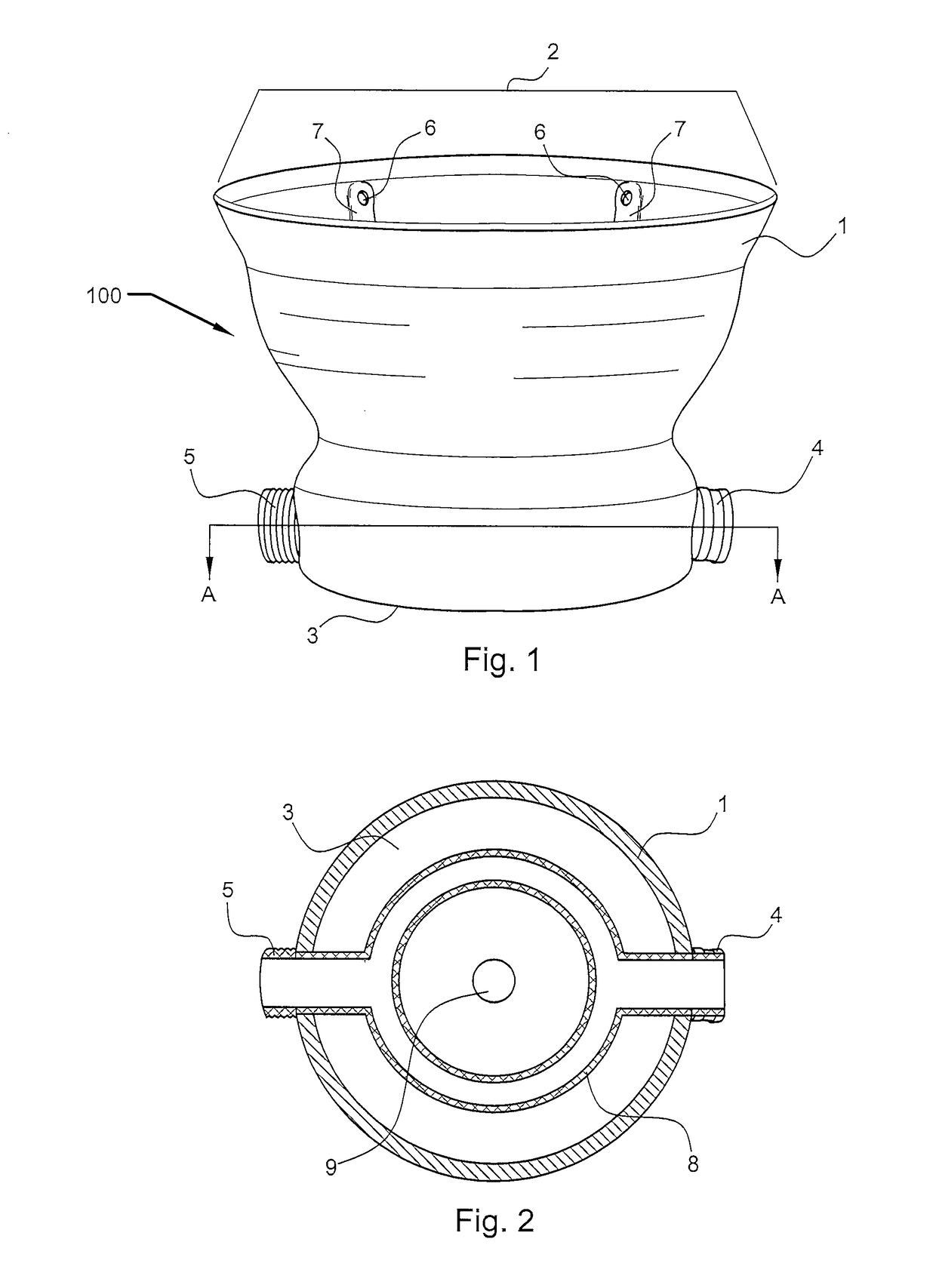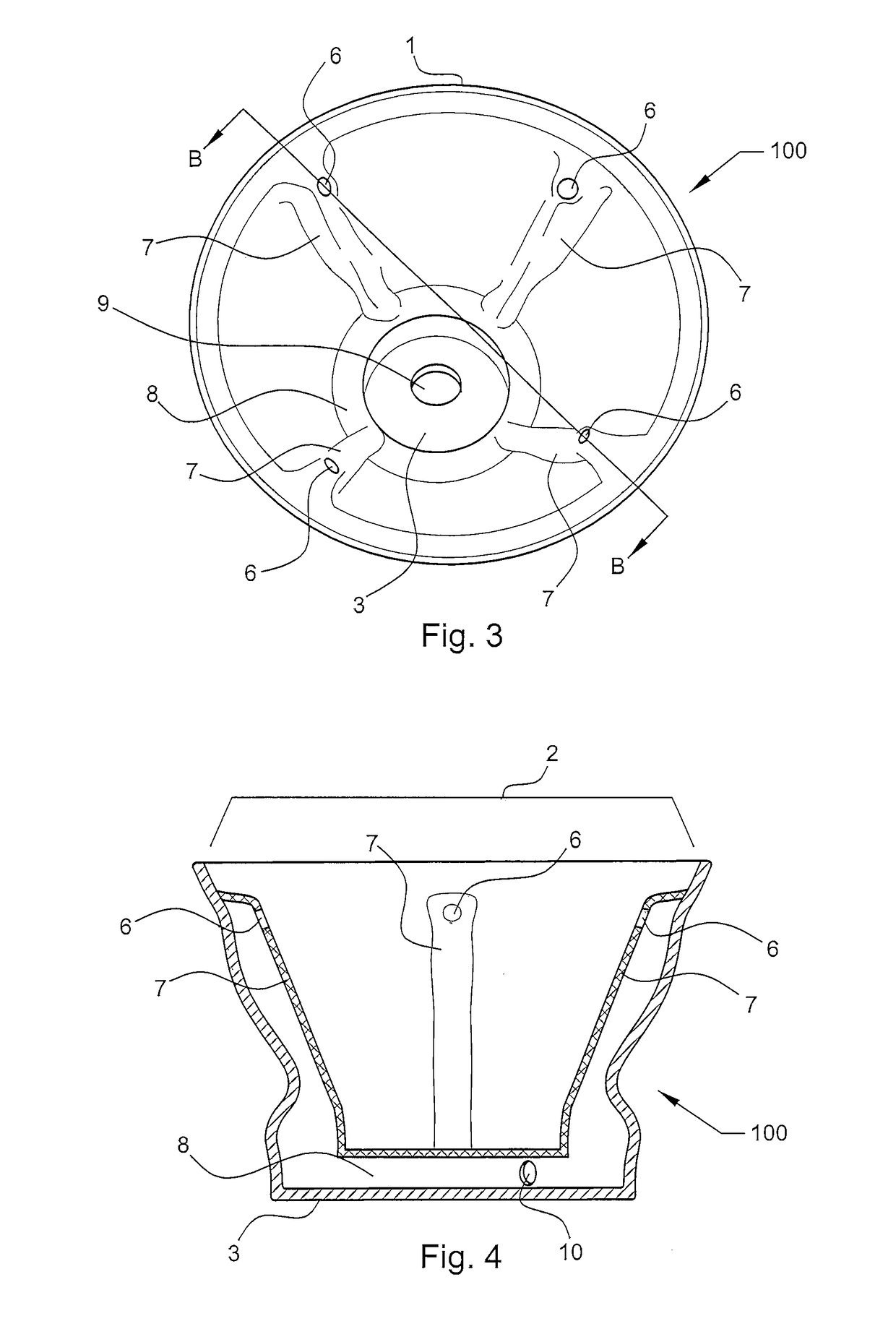Self-Watering Planter
a planter and self-watering technology, applied in the field of self-watering planters, can solve the problems of increasing the burden on the homeowner or gardener, affecting the quality of life of plants, so as to prevent non-desired growth, save water, and facilitate the connection
- Summary
- Abstract
- Description
- Claims
- Application Information
AI Technical Summary
Benefits of technology
Problems solved by technology
Method used
Image
Examples
Embodiment Construction
[0040]This invention was developed to provide an efficient and aesthetically pleasing method of irrigating a planter of various desired geometric configuration or plurality of planters of various desired geometric configuration requiring only a single common standard garden water hose to provide the water to all of the planters no matter the number. In addition, it was developed to allow for easy automatic planter irrigation on decks, patios, and landscaping using the available water facet and / or lawn watering system without the need for separate water and / or electrical lines to each planter.
[0041]Turning to FIG. 1, shown therein is an illustrative perspective side view of self-watering planter 100 of the present invention; comprising substantially tubular side wall 1 having a proximal (top) open end 2, distal (bottom) end 3, an integral water manifold 8 (see FIG. 2) water intake fitting 4, and water exit fitting 5. Also shown are integral water distribution channels 7 having water ...
PUM
 Login to View More
Login to View More Abstract
Description
Claims
Application Information
 Login to View More
Login to View More - R&D
- Intellectual Property
- Life Sciences
- Materials
- Tech Scout
- Unparalleled Data Quality
- Higher Quality Content
- 60% Fewer Hallucinations
Browse by: Latest US Patents, China's latest patents, Technical Efficacy Thesaurus, Application Domain, Technology Topic, Popular Technical Reports.
© 2025 PatSnap. All rights reserved.Legal|Privacy policy|Modern Slavery Act Transparency Statement|Sitemap|About US| Contact US: help@patsnap.com



